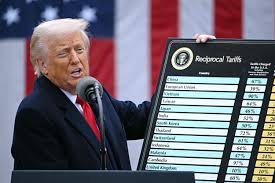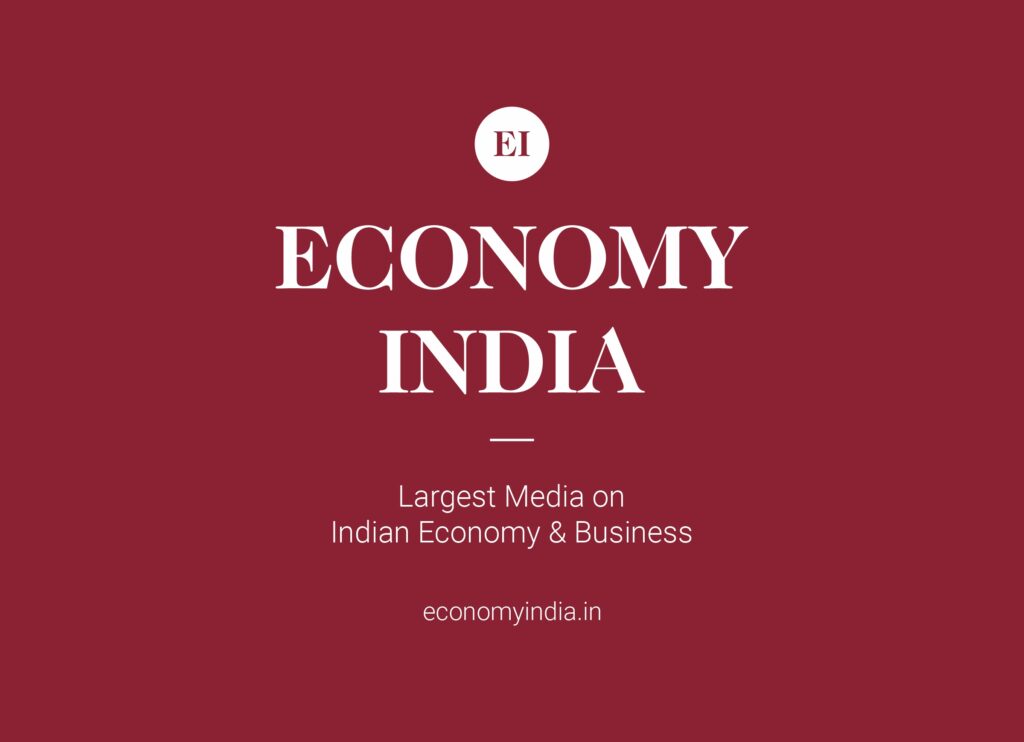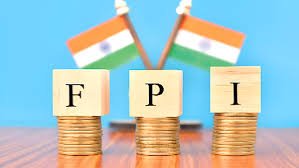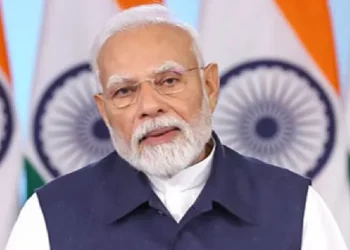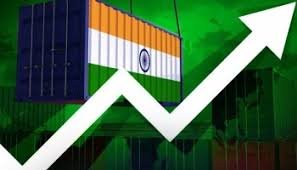Despite a legal setback for Trump, Indian trade remains caught in uncertainty with billions at stake in key export sectors.
Washington/New Delhi (Economy India): In a ruling with sweeping implications for international trade, a US appeals court has struck down most of the tariffs imposed by former President Donald Trump as unlawful, declaring that the executive branch does not have unlimited power to levy duties on imports.
The 7–4 verdict, delivered this week, concluded that Trump exceeded his authority under the International Emergency Economic Powers Act (IEEPA) of 1977, which he used as the legal basis for a series of tariffs on imports from China, Canada, Mexico, India, and other major trading partners.
While the decision could eventually unwind hundreds of billions of dollars in tariff revenues, the court stayed its enforcement until October, giving Trump’s legal team time to seek relief from the US Supreme Court.

The Court’s Ruling: A Blow to Presidential Tariff Powers
The central question before the court was whether Trump had the legal authority to declare America’s trade deficit a “national emergency” and use IEEPA to impose duties.
The court’s majority opinion stated bluntly that tariff-setting power rests with Congress, not the White House:
“The IEEPA was not designed to grant the President unlimited authority to impose tariffs. When Congress intends to give such power, it writes so explicitly into law.”
The ruling emphasized that IEEPA was crafted in 1977 to give presidents emergency powers to freeze assets, regulate foreign exchange, or block transactions during national security crises — not to unilaterally reshape America’s trade policy.
The judges clarified that Trump could, under certain narrow circumstances, impose tariffs of up to 15% for a maximum of 150 days, provided there is a clear, immediate justification. Anything beyond that requires explicit congressional authorization.
Trump’s Reaction: Tariffs as a Shield for America
Trump blasted the decision on social media, calling it a “dangerous blow to America’s sovereignty.”
“If these tariffs are removed, America will be destroyed. Our trade deficit is a national emergency. Tariffs are the only shield protecting our economy and our workers,” he wrote.
For Trump, tariffs have long been a political and economic tool, both as President and now as a leading candidate in the upcoming US election. He framed his aggressive tariff policy as a way to protect American industries, revive manufacturing, and punish what he described as “unfair trade practices” by China, Mexico, Canada, and India.
Financial Stakes: $159 Billion at Risk
Trump’s administration argued in court that repealing the tariffs could trigger massive financial liabilities.
- Since the imposition of duties, the US government has collected $159 billion (₹13 lakh crore) in tariff revenues.
- If the court ruling stands, much of this could be subject to refund claims from importers.
- Officials warned that such a reversal could blow a hole in federal revenues, especially at a time when fiscal deficits are mounting.
This financial dimension underscores why the US government is likely to fight the ruling all the way to the Supreme Court.
India at the Crosshairs: 50% Tariff Shock
India is among the countries most affected by Trump’s tariff escalation. On August 27, the US imposed a blanket 50% tariff on Indian goods, citing concerns over India’s purchases of Russian oil and trade imbalances.
According to the Global Trade Research Initiative (GTRI):
- Indian exports worth nearly ₹5.4 lakh crore are exposed to the new duties.
- Products at risk include textiles, gems & jewellery, furniture, and seafood — sectors that are highly labor-intensive.
- Demand for these goods in the US could fall by up to 70%, as American buyers shift to suppliers from China, Vietnam, and Mexico who face lower tariff barriers.
For India, which counts the US as its largest export destination, this represents not just an immediate commercial hit but also a potential long-term loss of market share.
The Russia Factor: Oil Purchases Trigger Trade Penalties
The immediate trigger for Trump’s tariffs on India was its growing reliance on Russian crude oil.
- Prior to the Ukraine war, India imported just 0.2% (68,000 barrels/day) of its oil from Russia.
- By May 2023, this soared to 45% (2 million barrels/day).
- In the first seven months of 2025, India averaged 1.78 million barrels/day of Russian oil imports.
Over the last two years, India has spent more than $130 billion annually (₹11.3 lakh crore) on Russian crude — making it the second-largest buyer after China.
Trump cited these purchases as undermining US sanctions on Russia, announcing on August 6 that countries buying Russian oil would face punitive tariffs. India, along with China, was singled out in this category.
Implications for India’s Economy
The tariff escalation carries significant risks for India:
- Export Revenue Loss: A 50% tariff could wipe out competitiveness for many Indian goods, threatening export revenues from key industries.
- Employment Impact: Labour-intensive sectors like textiles and jewellery, which employ millions, could face mass layoffs if demand contracts.
- Market Diversion: With buyers shifting to lower-tariff countries, India’s share in the US market may decline irreversibly.
- Energy Dilemma: India’s strategic oil purchases from Russia, while critical for energy security, now expose it to secondary trade sanctions from the US.
Trade experts warn that unless corrective measures are taken, India could face a dual hit: falling exports to the US and rising costs of adjusting its energy and trade strategies.
Global Context: Tariffs as a Weapon of Geopolitics
Trump’s tariff battles are part of a broader trend of using trade as a geopolitical weapon. The tariffs on China were justified on grounds of intellectual property theft and unfair subsidies, while those on allies like Canada, Mexico, and India were framed as addressing trade deficits or punishing foreign policy choices.
Critics argue that such measures:
- Distort global supply chains.
- Fuel inflation at home by raising prices for American consumers.
- Create uncertainty for global businesses.
Supporters, however, contend that tariffs have forced countries to the negotiating table and reduced dependence on adversaries.
Legal vs Political Timeline
The tariff question is now set to become a Supreme Court battle, which may stretch for months. In the meantime, the tariffs remain in place, meaning Indian exporters will continue to face a hostile US trade environment.
Politically, tariffs are likely to remain central to Trump’s campaign rhetoric. By portraying himself as a defender of American jobs against foreign imports, he seeks to consolidate support among working-class voters in manufacturing-heavy states.
For India, this means uncertainty until at least late 2025, as legal proceedings and election dynamics play out.
India’s Options Going Forward
India has limited but critical choices in responding to the tariff shock:
- Diplomatic Negotiations: Intensify trade talks with Washington to seek exemptions or reduced duties in specific sectors.
- Diversification: Accelerate efforts to expand exports to Europe, ASEAN, Africa, and the Middle East to reduce US dependence.
- Domestic Reforms: Use the Production-Linked Incentive (PLI) schemes to strengthen local manufacturing competitiveness.
- Strategic Balancing: Manage Russian oil purchases carefully, balancing energy needs with potential trade repercussions.
Trade, Law, and Strategy Intertwined
The US court’s decision is a reminder that trade wars are not just about economics, but also about law, politics, and global strategy.
For Trump, tariffs remain both a policy tool and a campaign weapon. For India, they represent a pressing challenge that could reshape export markets, employment, and its position in the global supply chain.
As the legal fight moves to the Supreme Court and geopolitical pressures mount, India will need to navigate a difficult balance — safeguarding its economic interests, protecting millions of jobs, and maintaining its strategic autonomy in a polarized global order.
(Economy India)

